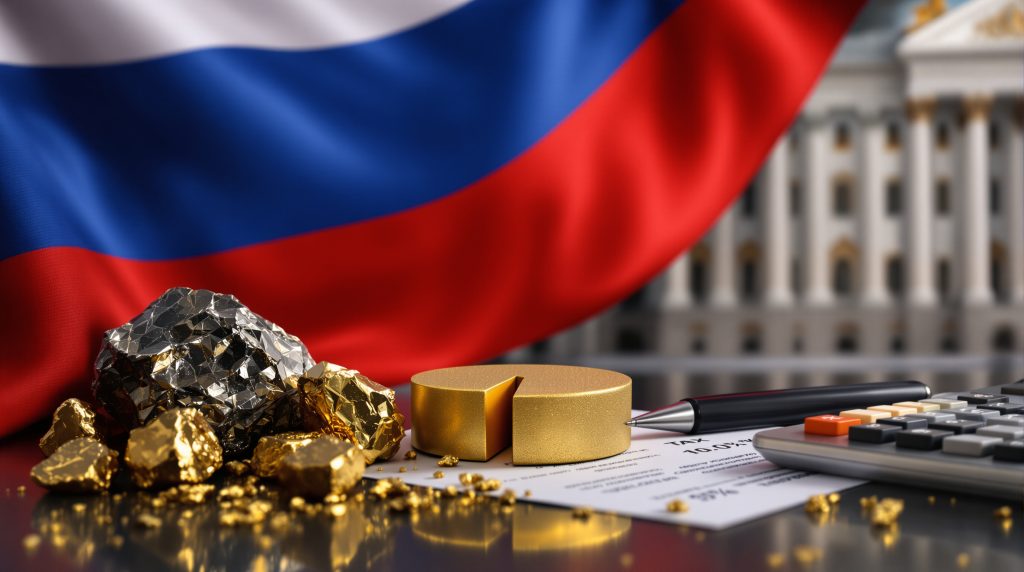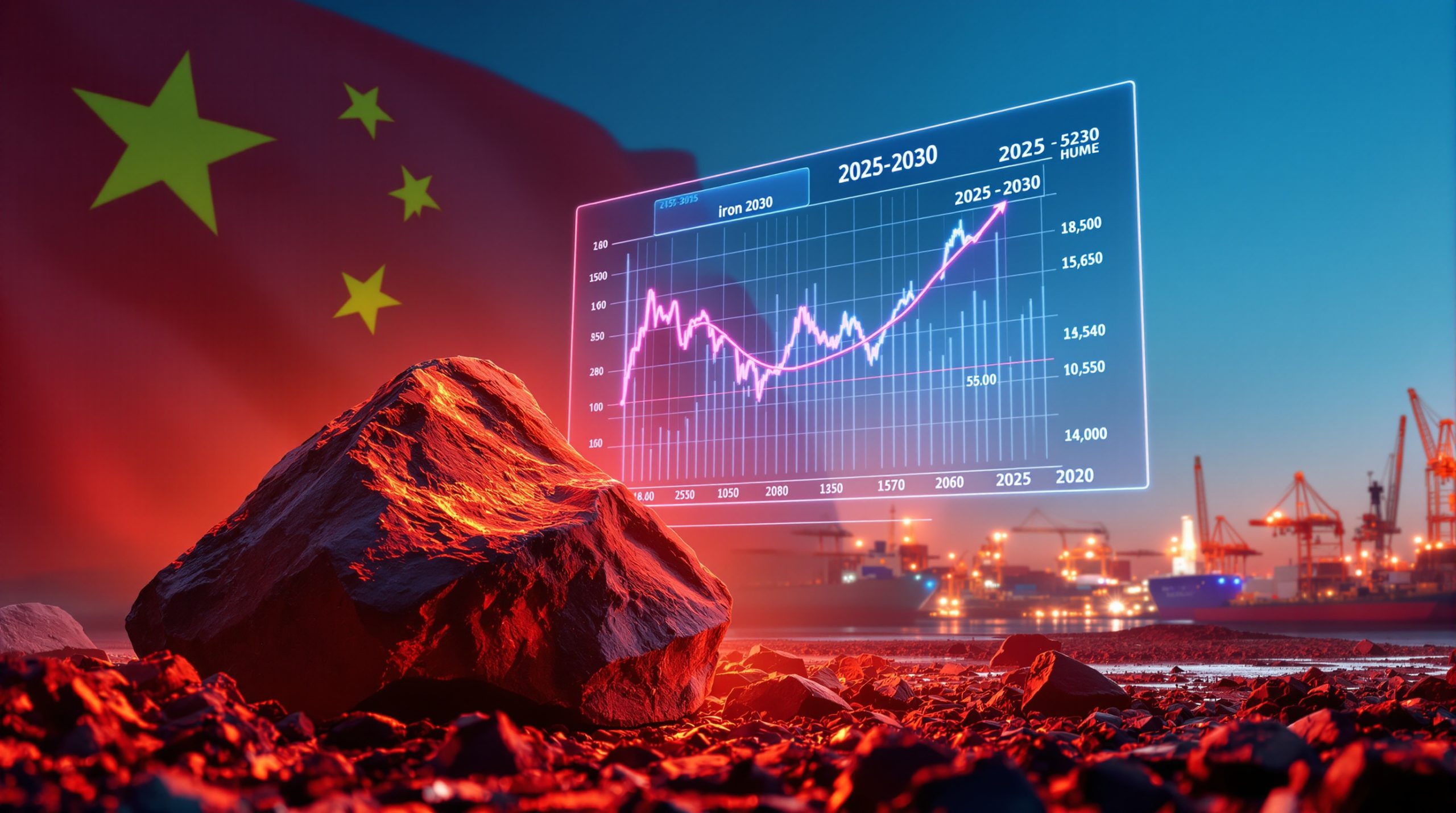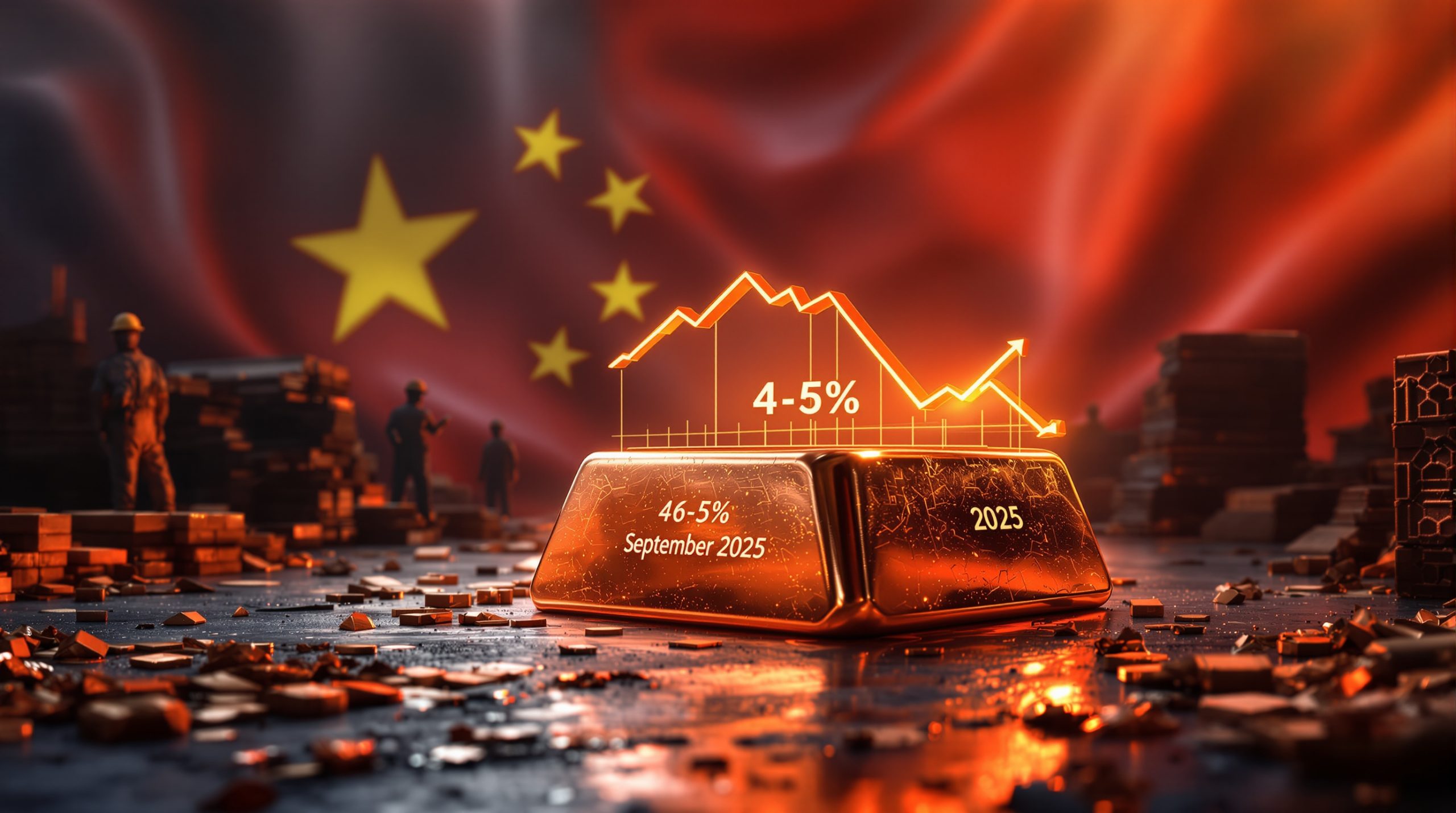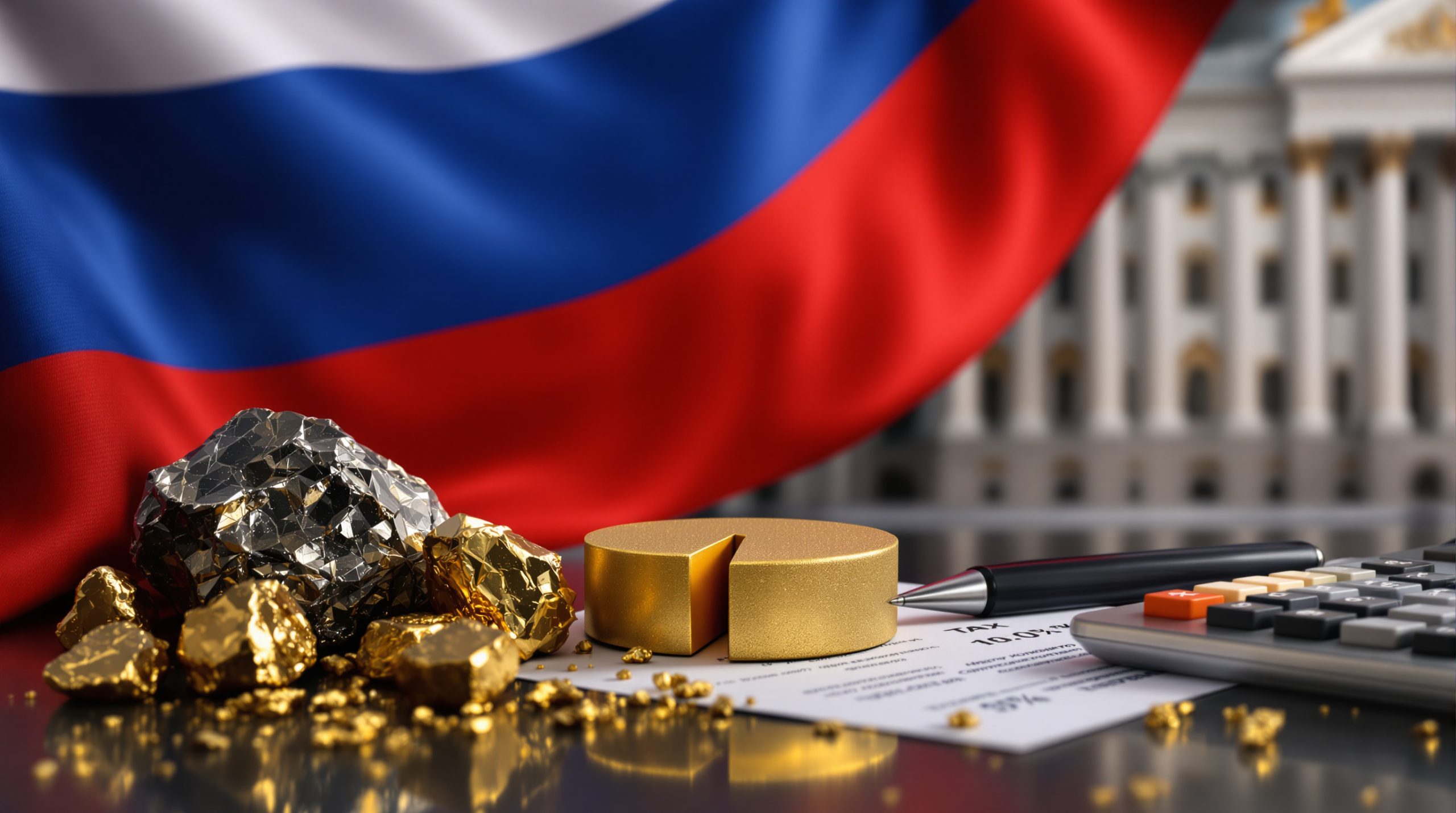Russia's Mineral Extraction Tax Increases: Understanding Economic Impacts
Russia's ongoing adjustments to its mineral extraction tax (MET) system represent a significant shift in the country's fiscal policy framework. These strategic increases across multiple resource sectors aim to strengthen federal budget revenues amid changing economic pressures and priorities. The Russia mineral extraction tax increase reflects the government's determination to maximize returns from its vast natural resources.
Current MET Revenue Trends
The most recent data shows Russia's August 2023 MET proceeds on crude oil reached approximately 600 billion roubles ($7.42 billion), marking a 3.5% increase from July's 580 billion roubles. Per-ton MET rates increased to 22,054 roubles in August, representing a 2.6% rise from July's 21,501 roubles.
Several key factors contributed to this revenue growth:
- A $13.8 per metric ton rise in export duties
- A 1.77% depreciation of the rouble against the US dollar
- Implementation of the unified tax payment system
Despite this growth, August MET proceeds still fell short of the government's monthly target. Russia had previously revised its forecast of MET proceeds on crude to 7.53 trillion roubles annually, which translates to roughly 640 billion roubles monthly. The actual August collection of 600 billion roubles represents a 6.25% shortfall from this target.
What Changes Are Planned for Russia's Extraction Tax Framework?
Russia's government is pursuing a comprehensive reform of its mineral taxation structure with significant changes planned for implementation in coming years. This reform represents one of the most substantial adjustments to the country's resource revenue collection system in recent history, potentially influencing global taxes and royalties across the mining sector.
Strategic Shifts in Tax Policy
The current mineral extraction tax framework is being recalibrated to optimize revenue collection while balancing economic development goals. Russian policymakers are evaluating several approaches that have been successful in other resource-rich nations, including:
- More progressive taxation elements based on profitability
- Greater differentiation between resource quality and accessibility
- Enhanced integration with export duty mechanisms
- Strengthened compliance monitoring requirements
These adjustments reflect the government's need to generate additional revenue while maintaining the competitiveness of its resource sectors in global markets.
Why Is Russia Revising Its Mineral Extraction Tax System?
Russia's move to adjust its mineral extraction taxation framework stems from a complex interplay of economic, fiscal, and strategic factors. The government faces multiple challenges that have increased the urgency for revenue enhancement in response to multipolar economic shifts in the global landscape.
Budget Revenue Enhancement Objectives
The Russian government's fiscal strategy encompasses several priorities:
- Infrastructure development financing
- Economic diversification initiatives
- Sovereign wealth fund replenishment
- Response to changing global market conditions
Macroeconomic Factors Influencing Policy
Several economic realities are shaping Russia's tax policy decisions:
- Fluctuating global commodity prices creating revenue uncertainty
- Western sanctions affecting traditional revenue streams
- Currency exchange rate pressures impacting budget calculations
- Domestic inflation requiring careful fiscal management
Strategic Resource Management Considerations
Beyond immediate revenue needs, Russia's approach to mineral taxation reflects longer-term strategic thinking about its natural resources:
- Optimizing returns from non-renewable assets
- Balancing extraction rates with sustainability considerations
- Encouraging domestic mineral beneficiation opportunities
- Maintaining competitive position in key global markets
How Might These Tax Adjustments Affect Russia's Resource Industry?
The evolution of Russia's mineral extraction tax system will have varying impacts across different sectors of the country's resource economy, potentially reshaping investment patterns and operational strategies for major producers. According to recent analyses, these changes are part of a broader trend in global resource economies.
Potential Industry Responses
Resource companies operating in Russia are likely to implement several strategic adjustments:
- Acceleration of efficiency improvement initiatives to offset higher tax burdens
- Reassessment of marginal production assets that become uneconomical
- Potential consolidation among smaller producers unable to absorb tax increases
- Increased focus on cost control measures throughout operations
- Exploration of tax optimization strategies within legal frameworks
Sectoral Vulnerability Assessment
Different segments of Russia's resource industry face varying levels of exposure to tax increases:
- High-cost producers will face the greatest profitability pressure
- Export-oriented operations may benefit from currency effects that partially offset tax increases
- Domestic market suppliers have limited ability to pass costs to consumers
- Vertically integrated companies generally maintain better positions to absorb increases
Investment Implications
The tax adjustment process may significantly influence capital allocation decisions:
- Potential delays in greenfield project development as economics are reassessed
- Prioritization of brownfield expansion leveraging existing infrastructure
- Increased scrutiny of capital allocation decisions by corporate boards
- Enhanced focus on technological solutions that can reduce effective tax burdens
What Are the Broader Economic Implications?
The ripple effects of Russia's mineral taxation adjustments extend beyond immediate revenue generation, potentially influencing the country's economic structure and international trade relationships, including potential impacts on the US economy tariffs and trade policies.
Domestic Economic Effects
Several internal economic consequences may emerge:
- Potential inflationary pressure if producers pass costs to consumers
- Employment impacts in resource-dependent regions if production scales back
- Accelerated technological modernization as companies seek efficiency gains
- Possible shifts in domestic industrial competitiveness based on input costs
International Trade Considerations
On the global stage, Russia's tax adjustments may influence:
- Export pricing strategy adjustments by major producers
- Competitive positioning in global commodity markets
- Interactions with existing trade restrictions
- Bilateral resource agreements with key trading partners
Long-term Economic Planning
Russia's resource tax strategy connects to broader economic development goals:
- Resource depletion rate management to extend economic benefits
- Sustainable development pathways for extraction industries
- Economic diversification funding through resource revenues
- Infrastructure modernization initiatives in resource regions
How Do Russia's Extraction Tax Rates Compare Internationally?
Russia's mineral taxation framework operates within a global context, with various approaches to resource taxation worldwide. Understanding these comparative differences provides important context for evaluating Russia's system, particularly as it influences the broader mining industry evolution worldwide.
Comparative Tax Burden Analysis
When compared to other major resource-producing nations:
- Russia's effective tax rates generally fall in the mid-range of global systems
- The system places greater emphasis on production-based rather than profit-based taxation
- There is less differentiation between resource quality and accessibility than in some other jurisdictions
- The framework maintains stronger connections to export mechanisms than many comparable systems
Distinctive Features of Russia's Approach
Several aspects distinguish Russia's mineral taxation system:
- Integration with export duty mechanisms creates a more complex overall framework
- The unified tax payment system simplifies administration but reduces flexibility
- Currency exchange rate sensitivity creates additional volatility in effective rates
- The system undergoes more frequent adjustments to align with fiscal needs
What Implementation Challenges Might Russia Face?
The process of adjusting mineral extraction taxes presents several potential hurdles that could affect both government revenue realization and industry stability. The Russia mineral extraction tax increase must navigate these challenges to achieve its fiscal objectives.
Administrative Implementation Hurdles
The tax adjustment process requires addressing several practical challenges:
- Assessment methodology adjustments for different resource categories
- Enhanced compliance monitoring requirements to prevent avoidance
- Management of potential tax disputes arising from new frameworks
- Transition period arrangements to avoid market disruptions
Industry Response Factors
The government must navigate various forms of industry feedback:
- Lobbying efforts by affected sectors seeking modifications
- Requests for targeted exemptions for strategic projects or regions
- Appeals for implementation phasing to allow operational adjustments
- Potential production curtailment threats from marginal operators
Economic Risk Considerations
Several broader risks require careful management:
- Potential unintended consequences for the investment climate
- Production volume reductions if tax levels exceed economic thresholds
- Supply chain disruptions affecting downstream industries
- Regional economic impact disparities based on resource concentrations
Key Aspects of Russia's Mineral Extraction Tax System
Understanding the fundamental components of Russia's MET framework helps contextualize current and planned changes. As noted by experts in mineral taxation, these systems require careful calibration.
Core MET Structure Elements
Russia's mineral extraction tax system operates through several key mechanisms:
- Percentage-based assessment on mineral value for most resources
- Volume-based fixed rates for certain commodities
- Adjustment coefficients based on market conditions
- Integration with export duty frameworks
- Unified payment schedule requirements
Calculation Methodology
The MET calculation process typically involves:
- Base rate determination according to resource type
- Application of various adjustment coefficients
- Consideration of quality and accessibility factors
- Market price influences on effective rates
- Currency exchange rate impacts
Collection and Administration
The tax administration system includes:
- Monthly payment requirements for most resource categories
- Unified tax payment system implementation
- Detailed reporting requirements for extraction volumes
- Verification procedures for resource quality and quantity
- Appeal processes for disputed assessments
FAQs About Russia's Mineral Extraction Tax
When are mineral extraction tax payments due in Russia?
Under the unified tax payment system, MET payments for monthly production are typically due by the end of the following month. For example, August production taxes must be remitted by September 29th.
How does the rouble exchange rate affect mineral extraction tax calculations?
The rouble's value against major currencies, particularly the US dollar, directly impacts MET calculations. When the rouble weakens, the effective tax rate typically increases, as demonstrated by the 1.77% rouble depreciation that contributed to higher August 2023 tax revenues.
How do Russia's mineral extraction taxes compare to royalty systems in other countries?
While many resource-rich nations employ profit-based royalty systems with progressive elements, Russia's approach emphasizes production-based taxation with stronger connections to export mechanisms. This creates a different risk-reward profile for resource investors compared to jurisdictions like Australia or Canada.
What factors contribute to changes in Russia's monthly MET revenue?
Monthly MET revenue fluctuations stem from several factors, including commodity price movements, exchange rate shifts, production volume changes, seasonal extraction patterns, and periodic adjustments to the tax calculation methodology.
How might Russian mineral producers offset higher extraction taxes?
Resource companies typically employ several strategies to mitigate tax increases, including operational efficiency improvements, technological investments, production optimization, cost control initiatives across supply chains, and strategic focus on higher-margin resources.
How does Russia's unified tax payment system work for resource companies?
The unified tax payment system consolidates multiple tax obligations into a standardized payment schedule, simplifying administration but potentially creating cash flow challenges for producers. This system requires companies to carefully manage their tax planning and liquidity.
Want to Stay Ahead of Major ASX Mineral Discoveries?
Gain instant notifications about significant mineral discoveries on the ASX with Discovery Alert's proprietary Discovery IQ model, turning complex mining data into actionable investment opportunities. Explore why historic discoveries can generate substantial returns by visiting Discovery Alert's dedicated discoveries page and begin your 30-day free trial today to secure your market advantage.




